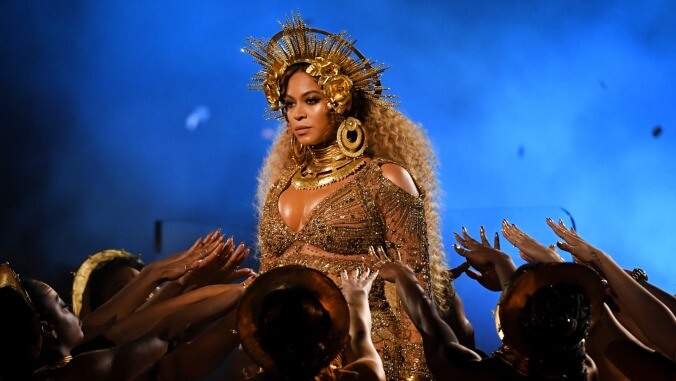Read This: An incredibly thorough investigation of the theory behind Beyonce's "Break My Soul"
Composer Vivek Maddala has kindly taken the time to walk you through the infectious track that had everyone ready to release their jobs

One second on June 20, we were all strolling along our daily commute, happy to be back in the office and dedicated to our career dreams—the next, we were ready to release our jobs and deride The Man to filth. What happened to shift the tides, of course, was the release of Beyonce’s ridiculously infectious comeback single “Break My Soul.”
From the absolutely ripping center sample from New Orleans bounce superstar Big Freedia to the silky, echoing ‘90s-inspired house beat, the song equally mesmerized and mobilized the Beyhive. Now, a new Stereo Gum article diving into the music theory and technique behind the track suggests there’s something more refined and scientific to the song’s listenability—and it’s all in the music theory behind the track. Composer Vivek Maddala urges listeners not to dismiss “Break My Soul” as mainstream marketed “ear candy,” instead asserting that the track uses “deceptively sophisticated” composition methods.
For one, Maddala explains, the track uses the G# minor pentatonic scale almost entirely. “Break My Soul” has a diatonic melody, which means it never strays from its own key signature. The significance of the pentatonic scale is less its uniqueness than its ubiquity—Maddala calls it “the one musical scale you can find all over the world,” and one that cultures across the world have incorporated into divergent musical traditions. From South Asian ragas to American blues to First Nations music, the pentatonic scale forms a universal basis for an incredibly wide range of styles. Beyoncé takes the classic scale and translates it into the language of ‘90s house music, the kinds of beats she likely grew up moving to. By combining the presets and techniques that defined the era with modern, smooth vocal production, “Break My Soul” becomes as much an homage as a bridge to the future.
Maddala also points out that using such a “universal and intuitive” scale sets the scene for the more complex layers of production that take “Break My Soul” to the next level. For example, the entire first two minutes of the song rides on alternating G#min7 and C#min7 chords, creating what Maddala calls a “mesmerizing” effect. When you add Beyonce’s perfectly pitched mezzo-soprano (and her acrobatic ability for runs), the trance-like quality only grows stronger—the song doesn’t make you want to hit the dance floor, it implores you to.
Perhaps the slyest production choice on “Break My Soul” is the choice to mirror the lyrical content— “Lookin’ for motivation/ Lookin’ for a new foundation/ On to that new vibration.” Without giving too much of Maddala’s deftly researched and carefully presented piece, certain additions in the third chorus artfully capture the exodus and freedom Beyoncé sings about—a musical match made in heaven. Who knew something called a Neopolitan chord could make you want to quit your job so badly?
You can read the whole article over at Stereo Gum.